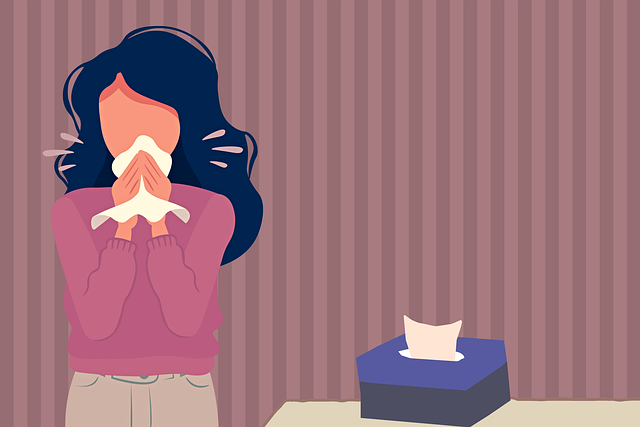

Effexor (venlafaxine) is an antidepressant medication that helps treat depression and anxiety disorders. While it is effective for managing mental health conditions, stopping Effexor abruptly can lead to severe withdrawal symptoms. This guide will cover Effexor withdrawal symptoms, the Effexor withdrawal timeline, and ways to manage the recovery process safely, including tapering off the medication.

Antidepressant discontinuation syndrome occurs when someone reduces or stops their medication too quickly, leading to uncomfortable discontinuation symptoms. These symptoms are common with SNRIs like Effexor due to its short half-life. Proper tapering, gradual reduction, and medical supervision are critical to managing this condition effectively.
Effexor withdrawal symptoms can include physical, psychological, and neurological effects:
Physical symptoms: Nausea, flu-like symptoms, dizziness, and tingling sensations.
Psychological symptoms: Mood swings, increased anxiety, and vivid dreams.
Neurological symptoms: Brain zaps, electric shock-like sensations, and brain shivers.
Common withdrawal symptoms like headaches and fatigue often improve with gradual tapering and a tapering schedule monitored by a healthcare provider.
Withdrawal symptoms typically begin 24-48 hours after the last dose. Early signs include nausea, dizziness, headaches, and electric shock-like sensations.
Symptoms like flu-like symptoms, mood swings, irritability, and vivid dreams usually intensify. Severe cases may involve suicidal thoughts or increased anxiety, making medical supervision essential.
Most physical symptoms resolve by the second week, but psychological symptoms such as depression and anxiety may persist. This is when ongoing support, such as family therapy or support groups, becomes crucial.
Building a strong support network can also be beneficial during this recovery phase.

Maintain regular sleep, proper hydration, and a balanced diet to support overall well-being.
Engage in light exercise to reduce stress and boost serotonin levels.
Practice stress management techniques like mindfulness and deep breathing.
Gradually reducing the dosage under a healthcare professional’s guidance with a structured tapering plan is the safest approach.
Discuss the use of antihistamines or other antidepressants to manage severe symptoms.
Coping with withdrawal from Effexor can be challenging, but there are several strategies that can help. Here are some tips to help you manage withdrawal symptoms:
Taking a break from work and other responsibilities can give you time to heal and recover from withdrawal symptoms. It’s essential to prioritize your health and well-being during this time. Consider taking a few days off work or reducing your workload to minimize stress and anxiety. This downtime allows your body and mind to adjust to the changes, making the withdrawal process more manageable.
Regular exercise can help boost your mood and reduce withdrawal symptoms. Engage in physical activities that you enjoy, such as walking, jogging, or yoga. Exercise can also help reduce stress and anxiety, which are common symptoms of withdrawal. Physical activity stimulates the release of endorphins, which can improve your overall sense of well-being and help counteract some of the discomfort associated with venlafaxine withdrawal.

Abruptly stopping Effexor increases the risk of severe symptoms, so a slow dose reduction over at least six weeks minimizes discomfort and ensures a smoother transition.
A healthcare provider can create a customized taper plan based on your current dose and health needs. This reduces the likelihood of severe venlafaxine withdrawal symptoms through careful monitoring.
It’s essential to take safety precautions when withdrawing from Effexor to minimize the risk of severe withdrawal symptoms. Here are some tips to help you stay safe:
Create a safety plan with your healthcare provider to ensure you have support during the withdrawal process. This plan should include:
A tapering schedule to gradually reduce your dosage, minimizing the risk of severe withdrawal symptoms.
Regular check-ins with your healthcare provider to monitor your progress and adjust the plan as needed.
A list of emergency contact numbers, such as your healthcare provider or a crisis hotline, in case you experience severe symptoms.
A plan for managing severe withdrawal symptoms, such as brain zaps or suicidal thoughts, ensuring you have immediate access to help if needed.
By following these safety precautions and coping strategies, you can minimize the risk of severe withdrawal symptoms and ensure a safe and successful withdrawal from Effexor. Remember, the support of a healthcare provider is crucial in navigating this challenging process, and taking proactive steps can make a significant difference in your recovery journey.
The duration of venlafaxine withdrawal varies due to individual variability but typically lasts several weeks. Psychological symptoms like mood changes may take longer to subside.
Brain zaps are described as sudden, shock-like sensory disturbances in the brain, often triggered by abrupt discontinuation or missing a dose.
Work with a healthcare professional to slowly reduce the daily dose through careful dose adjustments, ensuring a safe withdrawal process.
Effexor withdrawal can be a daunting experience, but it’s important to remember that recovery is achievable with the right approach and support. A carefully planned tapering schedule, created and monitored by a trusted healthcare provider, is the most effective way to minimize withdrawal symptoms and ensure a safe transition off the medication. Avoid the temptation to stop Effexor suddenly, as abrupt discontinuation significantly increases the risk of severe withdrawal symptoms, including brain zaps, mood swings, and intense anxiety.
Managing Effexor withdrawal requires both physical and emotional care. Focus on maintaining a healthy lifestyle by prioritizing regular sleep, proper nutrition, and physical activity. These simple actions can help your body cope with the changes while reducing the intensity of physical symptoms like flu-like symptoms and tingling sensations.
It’s also crucial to address the emotional challenges that can accompany withdrawal. Seek out family therapy, support groups, or individual counseling to navigate mood swings, depression, and other psychological symptoms that may arise. Emotional support from loved ones and professionals can make a significant difference in how you handle the recovery process.
If you or someone you know is dealing with Effexor withdrawal, don’t hesitate to reach out to a healthcare professional or addiction treatment center. They can provide medical guidance, emotional support, and additional resources to help you regain control of your life.
Recovery is not just about ending medication but about building a healthier future. By addressing the challenges with care and commitment, you can achieve long-term well-being and move forward with renewed strength and confidence.

At Sullivan Recovery, as an in-network provider we work with most insurance plans, such as:
And More
If you or a loved one are struggling with mental health challenges or substance abuse, reach out to Sullivan Recovery today. Our team of compassionate professionals is here to support your journey towards lasting well-being. Give us a call at 949-836-7180.
The most common symptoms of Effexor withdrawal include dizziness, nausea, headaches, and flu-like symptoms. Many people also experience mood swings, vivid dreams, and heightened anxiety. Neurological symptoms like brain zaps or electric shock-like sensations are frequently reported as well. These symptoms are more likely to occur if the medication is stopped abruptly rather than gradually tapered.
The duration of withdrawal varies depending on factors such as the dosage, how long you’ve been taking the medication, and whether tapering was done. Symptoms often begin within 24-48 hours of the last dose, peak around days 4-7, and start to improve after two weeks. However, some psychological symptoms, such as anxiety or depression, can linger longer. Working with a healthcare provider ensures proper management of these symptoms during the recovery process.
While it’s not always possible to prevent withdrawal entirely, the symptoms can be minimized by following a gradual tapering plan. This involves slowly reducing the dosage over several weeks or months, depending on your current prescription and health status. A healthcare professional can customize a tapering schedule to fit your needs, ensuring that both physical symptoms and psychological symptoms are manageable. Avoid abruptly stopping Effexor, as this is the primary cause of severe withdrawal symptoms.
Brain zaps and similar sensations, such as electric shock-like sensations, are common during Effexor withdrawal. To manage these symptoms, ensure you’re following a slow taper plan under medical supervision. Staying hydrated, maintaining regular sleep, and engaging in light physical activity may help reduce discomfort. If these symptoms become unmanageable, consult your doctor about possible interventions, such as temporary use of other medications or supplements.